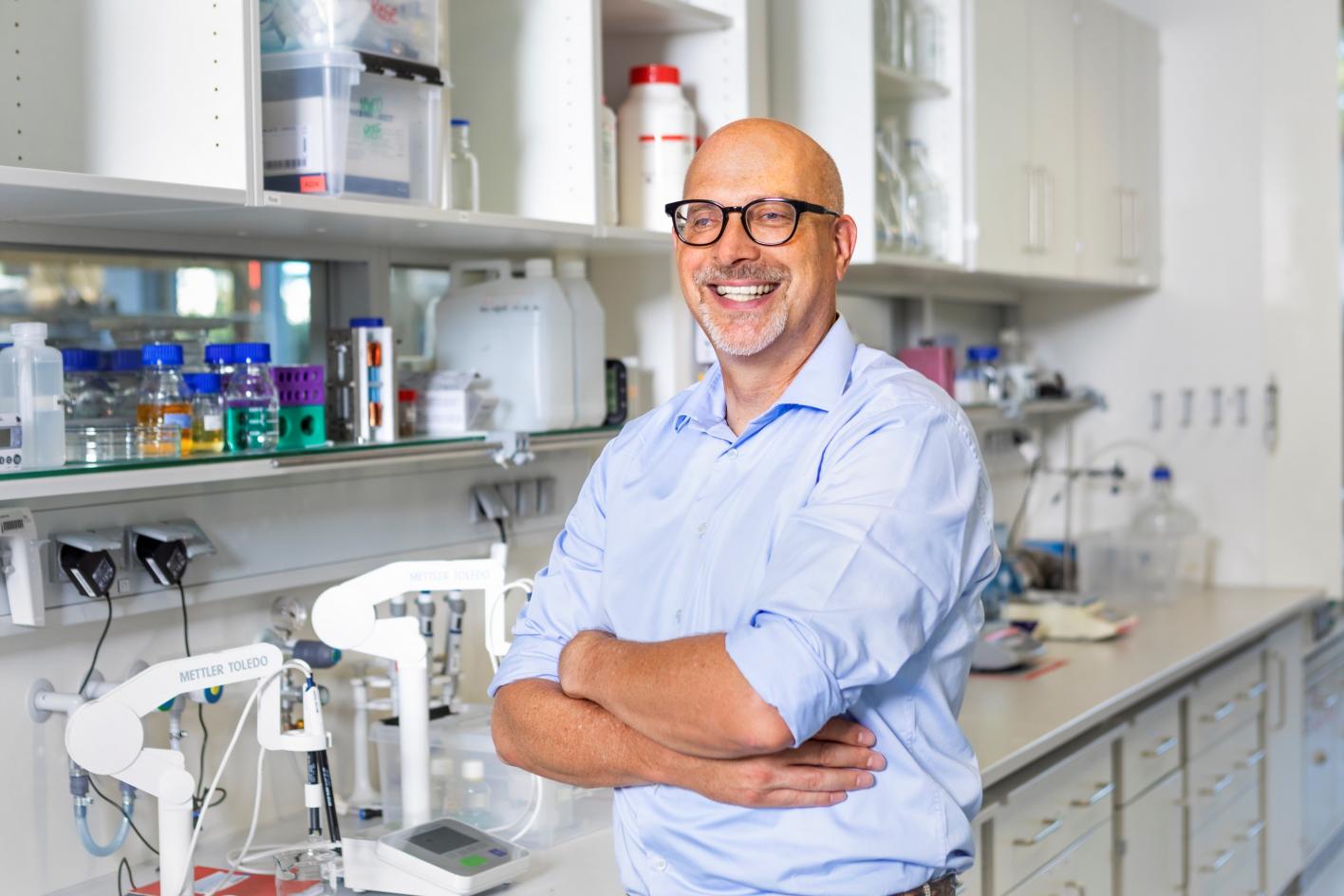Light is a widely used trigger to control the activity of drugs and the function of proteins. The combination of optics and genetics or pharmacology has given rise to new branches of research and application: optogenetics and photopharmacology. Techniques from both fields of research have led to promising new therapeutic options, the elucidation of brain functions or a deeper understanding of neuronal disorders. However, there are limitations that severely hamper major progress in these areas: the light cannot penetrate into deeper layers of tissue to exert their effect there.
About the "SONOPHARMAGEN" research project
This is where the ERC Advanced Grant-funded research of Professor Andreas Herrmann, Scientific Director of the DWI - Leibniz Institute for Interactive Materials and professor for Macromolecular Materials and Systems at RWTH Aachen University, will start: In contrast to light or photons, ultrasound can penetrate deep into the tissue. With a resolution in the submillimeter range, this promises new application possibilities and Andreas Herrmann has already been able to demonstrate the potential of this field of research.
Together with his team, he now wants to develop new control systems for activating active substances based on nucleic acids such as DNA, which can also be therapeutically active in deeper tissue layers of the body. To this end, the scientists will design certain DNA-based carrier systems in such a way that they can be loaded with bioactive substances and are sensitive to ultrasound. When exposed to ultrasound, these carriers release the loaded bioactive substances and the drugs are activated, for example to control cell functions. "We are talking here about ultrasound as it is used in a clinical environment and is not harmful to cells or tissue," explains Andreas Herrmann. "Our aim is to make use of the technology in diabetes research, cancer immunotherapy and tissue regeneration."
Andreas Herrmann's team will be able to pursue its research work intensively for the next five years as part of the ERC funding. He will receive 2.5 million euros from the European Research Council (ERC) as part of the ERC Advanced Grant for his project "Remote controlling biological systems by sonopharmacology and sonogenetics" (SONOPHARMAGEN).
Andreas Herrmann has thus succeeded in acquiring his third ERC grant: he received his first ERC Advanced Grant in 2016 and an ERC Starting Grant in 2009. The ERC Advanced Grants are part of the EU's Horizon Europe program and are aimed at established top researchers. The grant is one of the most prestigious and competitive scientific awards and instruments of EU research funding.
A completely new approach - switching on active ingredients with ultrasound
The basis of the new system for activating bioactive substances was developed by Andreas Herrmann as lead scientist together with his colleague Robert Göstl. In 2021, they published their technology for the first time in the renowned journal Nature Chemistry. They have tested it on conventional antibiotics, cancer therapeutics and blood coagulation drugs, among others. His motivation: Andreas Herrmann wants to make medical treatments as precise and controllable as possible in order to administer the active ingredients "at the site of action" in the body. Many drugs such as antibiotics or cancer therapies are subject to systemic application, which is associated with severe undesirable side effects and harm to patients. With his research, Andreas Herrmann wants to revolutionize pharmacotherapy and avoid systemic side effects. In addition, therapies should be optimized through specific spatio-temporal release and activation of the active ingredients. With his work, he wants to contribute to the establishment of the new research field of "sonopharmacology".

